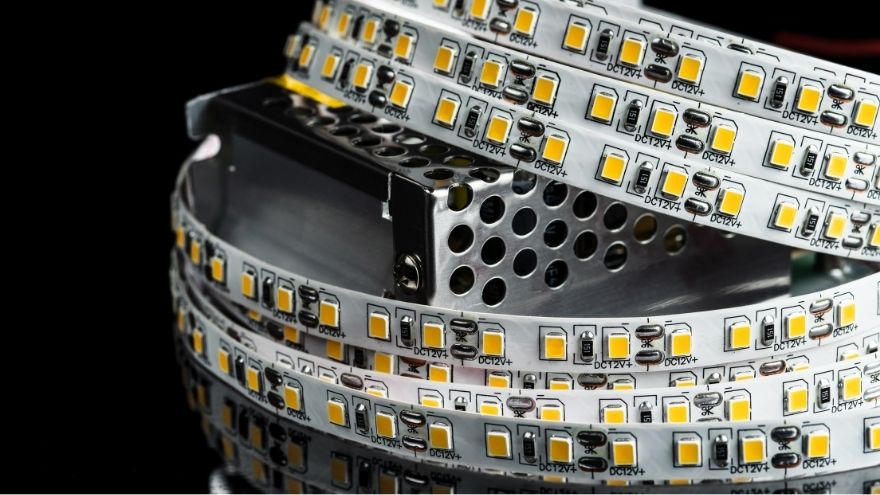The reason for high electricity bills was, among other things, traditional light bulbs, which were replaced by LED lighting - modern, pro-ecological, with high energy efficiency. However, it turned out that LED technology can also generate financial losses, and also cause interference in the operation of electrical equipment in the environment. The problem is usually a low-quality power supply, which draws the so-called reactive power. What is reactive power? What is the effect of reactive power on LED lighting installations? And what effects does reactive power compensation give? You will find answers to these and other questions in the guide below.

Check out the reactive power compensators at the Onninen wholesaler
What is reactive power?
Reactive power is electrical energy oscillating between elements of an alternating current circuit, which, despite being consumed, is not converted into either useful work or heat. The unit of reactive power (Q) is var (from English var – volt-ampere reactive). In power engineering, the Mvar unit is usually used. There is a distinction between inductive reactive power and capacitive reactive power. Most receivers use both active and reactive power, which they draw from the network. Active power, which is converted into useful work and heat, is expressed in watts.
On the one hand, reactive power is essential for the proper functioning of the power system, in particular for the correct operation of inductive devices connected to the network. It ensures the stability of the network voltage. On the other hand, as a result of reactive power, the current intensity in the system increases, which causes increased losses of electrical energy in devices, e.g. in generators, transmission lines and transformers. Therefore, excess reactive power is subject to compensation, which is carried out by electricity distributors. For this purpose, inductive (more often) or capacitive elements are used. In practice, reactive power compensation is mainly provided by reactive power capacitors .
Optimization of energy costs thanks to reactive power compensation
The cost of introducing reactive energy into the network appears on the electricity bill after exceeding the limit agreed with the supplier or for each introduced variable in the case of capacitive power. The amount of fees for excess reactive power taken can reach up to... 30% of the entire electricity bill! To optimize energy consumption costs, first calculate the amount of excess reactive power and connect a power quality analyzer to the device or main switchboard. Then, select the most appropriate compensation method for the specific case. Thanks to this, you can significantly reduce electricity bills, reduce reactive energy consumption and increase the stability of the entire power system.
Reactive Power and the Use of LED Lighting
Although modern LED lighting can reduce electricity bills by up to 70%, it generates capacitive reactive power in the network. LEDs need a power supply to operate, which generates reactive power in varying amounts – depending on its quality and the components used by the manufacturer. A good power supply is equipped with protection systems and elements for compensating reactive power and is characterized by a high power factor cosϕ. On the other hand, LED luminaires with poor-quality power supplies generate a lot of reactive power, so energy bills may not decrease at all, and may even increase compared to previously used, outdated incandescent lighting, which does not consume reactive power. Therefore, when replacing lighting with LEDs, it is necessary to verify the power factor cosϕ. It has a significant impact on the amount of electricity bills. The manufacturer of LED luminaires usually provides such information on the packaging.
We invite all professionals from the power industry to familiarize yourself with the offer of the Onninen wholesaler. Our assortment includes many advanced devices from the power industry, including those used for reactive power compensation (nN). We offer capacitors, regulators, analyzers and reactive power compensators , contactors, filter chokes, active filters and other elements. Our experts provide technical advice.
Check out the reactive power compensators at the Onninen wholesaler